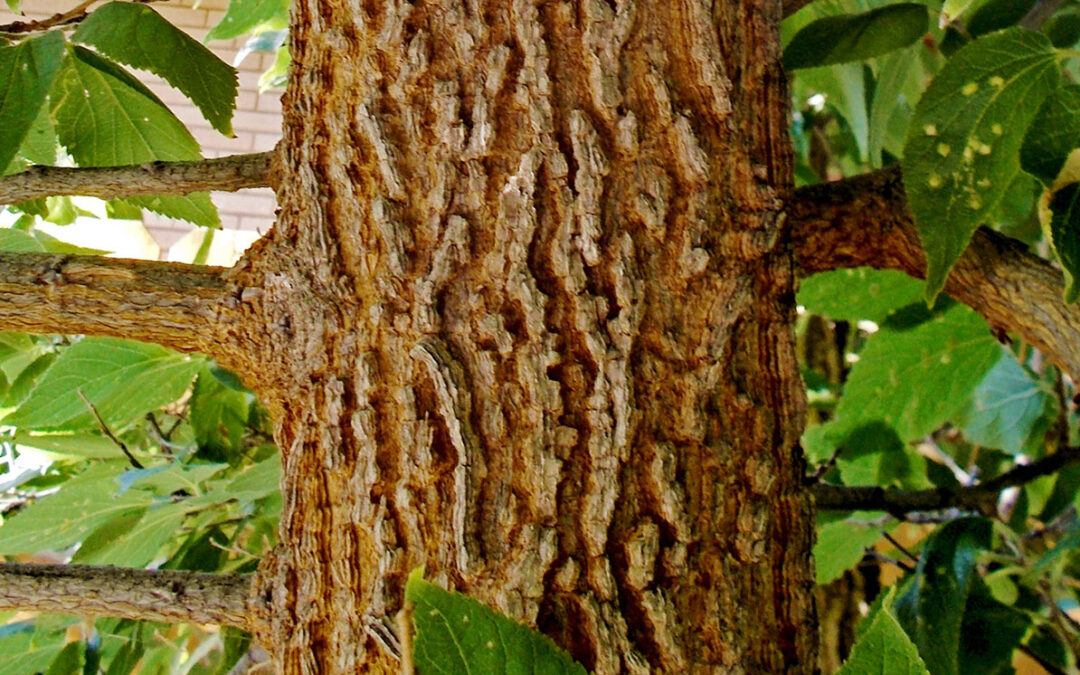Hackberry is a medium-sized shade tree planted in most neighborhoods in Denver that is relatively disease-resistant. It is one of the few trees native to Colorado, so it is drought-tolerant and resilient to our unpredictable weather. Hackberries grow 50 feet tall, forming a pleasing vase-shaped crown at maturity. Its shape makes it a suitable replacement for disease-prone American Elms. Like Western Catalpa and Kentucky Coffee trees, Hackberry saplings are ugly ducklings and take a while to develop into attractive trees, growing corky grey bark and ridges. Their fall leaf color is golden yellow. Below are some common diseases and issues found on Hackberries in Denver.
Hackberry Nipple Gall
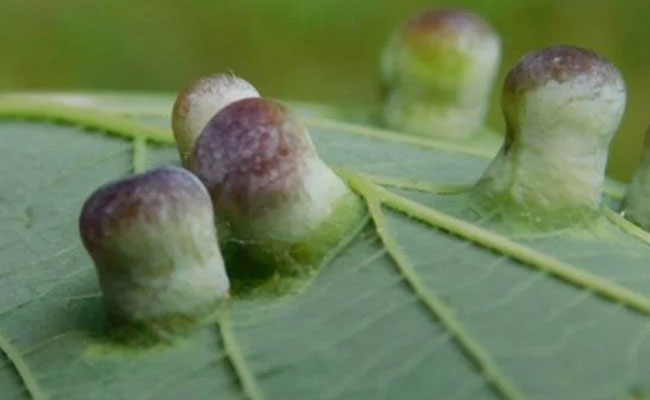
The Psyllids insect causes Nipple Galls, which look like tiny brown cicadas. Their larvae after hatching burrow into the leaves, trigs, and buds of trees to suck on their sap. These intrusions cause trees to form galls. Once started, formation is irreversible. Although galls are unattractive, they rarely damage the trees.
Hackberry Witches’ Broom
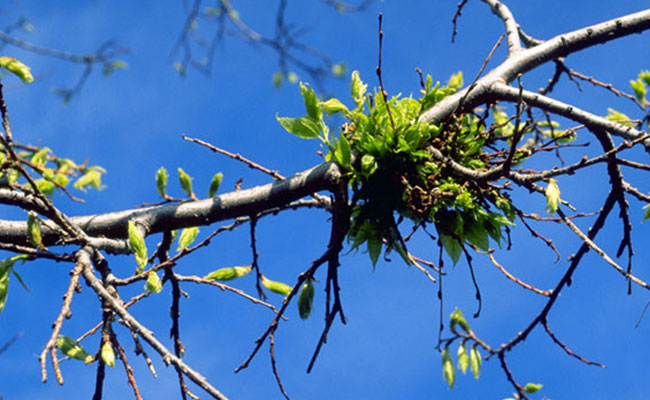
Hackberry Witches’ Broom is common in Colorado and characterized by a dense clustering of twigs that give off the appearance of a broom. The disease is complex and not fully understood, but it involves powdery mildew (Podoshaera phytoptophila) and the Eriophyid mite (Eriophyes Celtis). The brooms are not harmful, but large numbers make trees prone to mechanical breakage and reduce vigor. Pruning away diseased branches to sound wood can improve tree appearance and control the spread of the disease. Homeowners with affected trees should sign up for Ross Tree’s Tri-Level Fertilization Program to increase watering and feeding to improve tree health and slow the spread of the disease.
Kretzschmaria
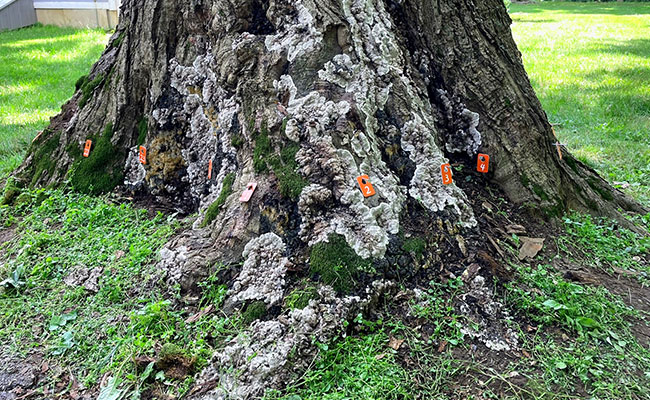
As mentioned in our Year of the Fungus blog this summer, all the rain Denver has gotten over the last two seasons can be a mixed blessing. Hackberries become susceptible to Kretzschmaria in moist environments. Visible fungal growth on trees and roots needs immediate attention. Fungal activity at the base of a tree means the root system may already be infected, increasing the risk of failure. Highly infected trees most likely have a compromised root structure and need removal.
Included Bark & Conk
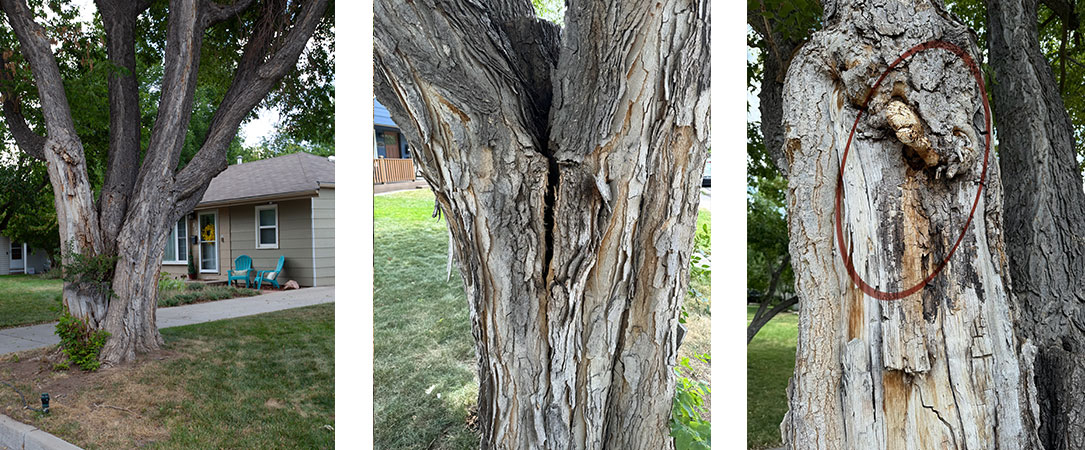
Hackberry trees live for over 100 years. The above tree is highly compromised because it has multi-trunks with included bark. It is 40 feet high and around 60 years old. As its trunks and large branches grow, the bark between them will start to work as a wedge, slowly pulling the tree apart. The weight of the canopy accelerates the process until the tree splits and becomes unstable. The tree has carpenter ants and a large fungi conk, which indicates rot. Ross Tree recommends removal.
Got a Hackberry trees with problems, please click here to fill out a request service form or call 303-871-9121. We are at your service.

